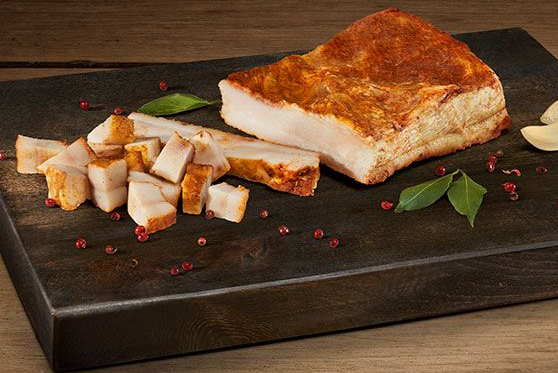Have you ever thought about just how much food is in the Harry Potter books? There’s a ton, from baked potatoes to lemon sherbets to Fizzing Whizzbees™. It is an important literary device, used to define settings and build characters.
In translation, changes in food items are some of the most visible. One reason is because food is very culture-specific. Kids reading the series in another language may have no idea what English dishes like “shepherd’s pie” and “black pudding” are. In some cultures, parents would be shocked that their kids are reading about some foods. (Think “bacon,” which to Muslims is repulsive. Translations in Muslim countries tend to translate the word as simply “meat.”)
From a literary standpoint, the foods should evoke an emotional connection from the readers in the target culture. When they read about Hogwarts feasts, they should feel like it’s a comfortable, home-cooked meal, not a visit to a restaurant for a foreign cuisine. When they read about maggoty haggis at Nearly Headless Nick’s deathday party, they should feel repulsed knowing that haggis is already a bit festering even without the maggots. For a translator, it’s very hard to keep unfamiliar food items on the menu. And also one of the easiest things to change. (So easy in fact, that a translator may not even realize they are changing the food: when Polish kids read about Harry sinking his teeth into a kiełbasa [the Polish word for “sausage”], they’re probably not thinking of the same kind of sausage that English kids typically eat.)
When Harry and Ron stay behind for the Christmas holidays in Philosopher’s Stone, they roast crumpets and marshmallows by the fire. Like chestnuts (which are mentioned in the Italian translation), they’re popular holiday fireplace foods. So what were some of the foods they were changed to in translation? Here are just five of the foods found in their place:
Slăninută (Romania)

At first sight it looks like tiramisu, but slănină is savory, not sweet. It’s a cut of pork fat, seasoned for consumption as a delicacy in much of Eastern Europe. Not a bad idea for your next charcuterie!
Petulla (Albania)

These doughnuts are a popular snack for Eid al-Fitr in Albania (and on Christmas for Albanian Christians). It’s most commonly eaten with a salty cheese or honey, but jams, chocolate, yogurt, or even ketchup are also common.
Melcocha (Spain and Latin America)

Melcochas are a type of hard candy made from sugar and popular during the Christmas season. The exact recipe and form of melcochas varies by country and region, and it often includes vanilla, cocoa, and/or lemon flavoring.
Qatlima (Xinjiang Uygur Autonomous Region)

This is a flaky, layered bread packed with oil, butter, or animal fat, and sometimes stuffed with meat, cheese, nuts, or veggies. It’s popular throughout Central Asia, though more commonly known as qatlama. Pictured is a variation from Uzbekistan, quite similar to what you’d find in Uyghur cuisine.
Cocon / Coca (Southern France and Catalonia)

Known as “Cocon” to Occitania in southern France and “Coca” to Catalonia in eastern Spain, this baked good can be either sweet or savory. One popular variation along the Mediterranean can even be topped with sardines or anchovies! A Christmas variation (pictured), topped with a generous amount of powdered sugar, looks as snowy as the season.

Leave a Reply